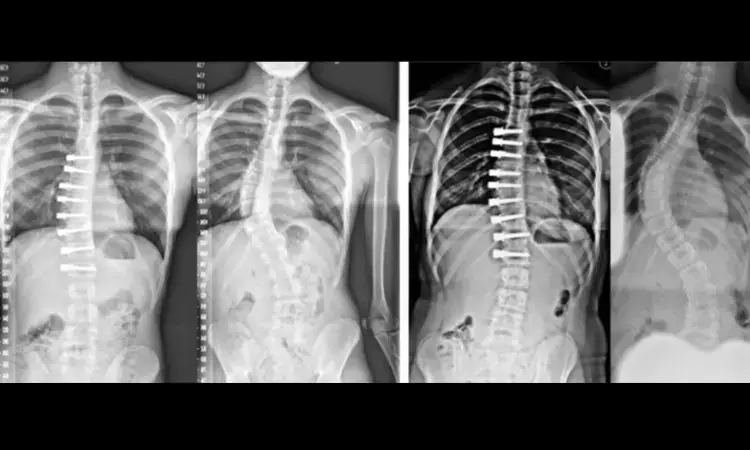- Home
- Medical news & Guidelines
- Anesthesiology
- Cardiology and CTVS
- Critical Care
- Dentistry
- Dermatology
- Diabetes and Endocrinology
- ENT
- Gastroenterology
- Medicine
- Nephrology
- Neurology
- Obstretics-Gynaecology
- Oncology
- Ophthalmology
- Orthopaedics
- Pediatrics-Neonatology
- Psychiatry
- Pulmonology
- Radiology
- Surgery
- Urology
- Laboratory Medicine
- Diet
- Nursing
- Paramedical
- Physiotherapy
- Health news
- Fact Check
- Bone Health Fact Check
- Brain Health Fact Check
- Cancer Related Fact Check
- Child Care Fact Check
- Dental and oral health fact check
- Diabetes and metabolic health fact check
- Diet and Nutrition Fact Check
- Eye and ENT Care Fact Check
- Fitness fact check
- Gut health fact check
- Heart health fact check
- Kidney health fact check
- Medical education fact check
- Men's health fact check
- Respiratory fact check
- Skin and hair care fact check
- Vaccine and Immunization fact check
- Women's health fact check
- AYUSH
- State News
- Andaman and Nicobar Islands
- Andhra Pradesh
- Arunachal Pradesh
- Assam
- Bihar
- Chandigarh
- Chattisgarh
- Dadra and Nagar Haveli
- Daman and Diu
- Delhi
- Goa
- Gujarat
- Haryana
- Himachal Pradesh
- Jammu & Kashmir
- Jharkhand
- Karnataka
- Kerala
- Ladakh
- Lakshadweep
- Madhya Pradesh
- Maharashtra
- Manipur
- Meghalaya
- Mizoram
- Nagaland
- Odisha
- Puducherry
- Punjab
- Rajasthan
- Sikkim
- Tamil Nadu
- Telangana
- Tripura
- Uttar Pradesh
- Uttrakhand
- West Bengal
- Medical Education
- Industry
Machine learning-based tool may help plan new treatment in patients with adolescent idiopathic scoliosis

USA: An artificial intelligence (AI) predictive model could be helpful for clinicians to plant treatment other than spinal fusions in patients with adolescent idiopathic scoliosis, a recent study has shown.
The study, published in PLOS One, proposed a machine-learning-based tool for planning anterior vertebral body tethering (AVBT), an emerging minimally invasive surgical treatment.
“The current model has the potential to serve as a valuable clinical tool, providing insight into the optimal timing of intervention and surgical planning parameters,” Sriram Balasubramanian, Drexel University, Philadelphia, PA, United States of America, and colleagues wrote.
AVBT, which was approved in the US in 2019, involves flexible cord implantation along the spine to guide spinal growth to correct deformities in adolescent patients who continue to progress despite bracing. In several studies, the tool was shown to be promising but, despite this, the predictability of the procedure remains uncertain and hinges on a complex interplay of factors that are difficult to analyze clinically.
Based on the above background, the research team developed a machine-learning-based algorithm that could potentially fill this gap.
Data from 91 patients with adolescent idiopathic scoliosis who underwent AVBT surgery at the Shriners Hospitals for Children in Philadelphia, were included. For all patients, spinal X-rays were taken at six visits, from patients’ first standing X-rays to their most recent follow-up exam.
The researchers analyzed these images, as well as surgical and demographic features associated with them to identify the 11 most predictive features of subsequent AVBT corrections and trained a gradient boosting regressor (GBR) model to predict outcomes based on these features. The dataset was randomly split into training (80%) and testing (20%) datasets.
The researchers reported the following findings:
- The AI model predicted the final Cobb angle with an average error of 6.3 ± 5.6 degrees.
- The model also provided a prediction interval, where 84% of the actual values were within the 90% prediction interval.
- The GBR model, trained on these features, predicted the final curve magnitude with a clinically acceptable margin of error.
"This is the first study to apply AI methods to longitudinal data from patients who underwent AVBT surgery," the researchers wrote. "Significantly, the model is based on a rank-ordered list of the most predictive features associated with postsurgical curve correction."
"The current model has the potential to serve as a valuable clinical tool, providing insight into the optimal timing of intervention and surgical planning parameters, which may improve surgical outcomes and facilitate informed decision-making in patient selection and timing for AVBT surgery," they concluded.
Reference:
Alfraihat, A., Samdani, A. F., & Balasubramanian, S. (2024). Predicting radiographic outcomes of vertebral body tethering in adolescent idiopathic scoliosis patients using machine learning. PLOS ONE, 19(1), e0296739. https://doi.org/10.1371/journal.pone.0296739
Dr Kamal Kant Kohli-MBBS, DTCD- a chest specialist with more than 30 years of practice and a flair for writing clinical articles, Dr Kamal Kant Kohli joined Medical Dialogues as a Chief Editor of Medical News. Besides writing articles, as an editor, he proofreads and verifies all the medical content published on Medical Dialogues including those coming from journals, studies,medical conferences,guidelines etc. Email: drkohli@medicaldialogues.in. Contact no. 011-43720751


